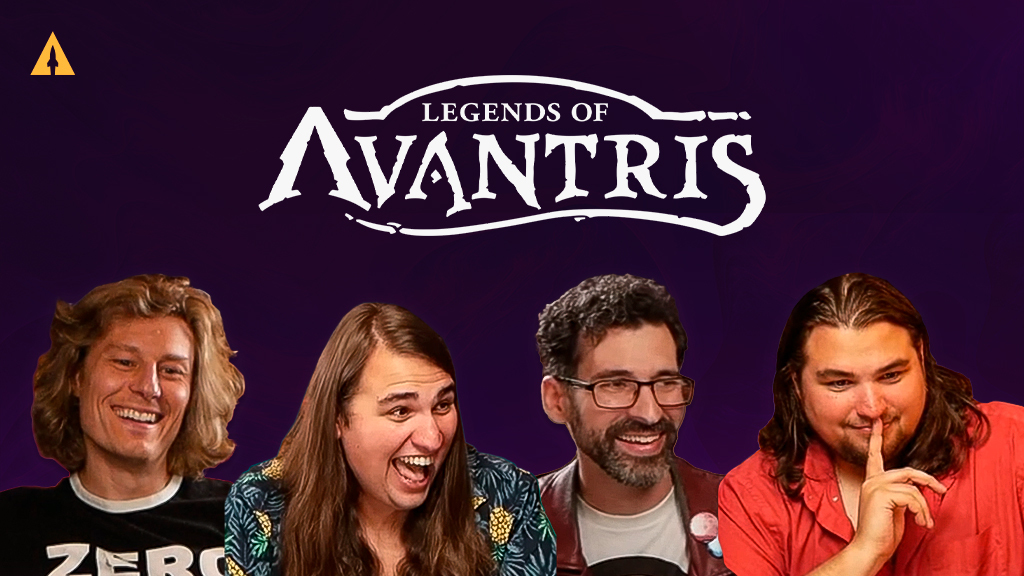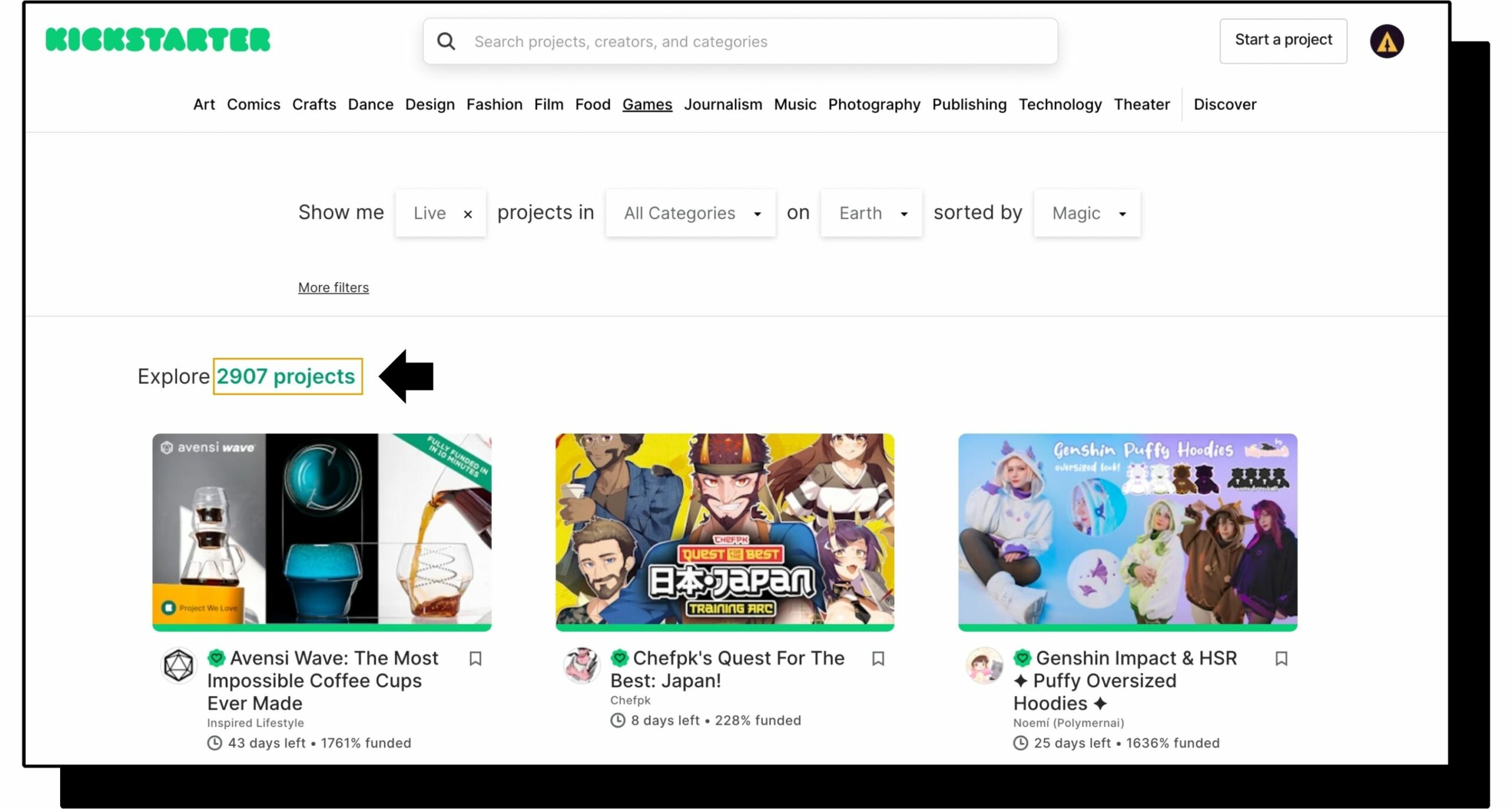
Six years ago, these best friends started a side project for fun.
Five months ago, they quit their jobs to focus on their “side project” full-time.
Here’s their story.

Meet Mikey, Richie, Derek, and Andy from Legends of Avantris – the creators of The Crooked Moon.
If you’re a long-time reader, you know that I’ve already told their story…
They started streaming D&D six years ago, they built up a huge following, they launched their first product on Kickstarter in October of 2023, and they raised over $4M.
Why am I here telling their story again?
Well, today’s story is a bit different.
I met them all in-person for the first time last week when I was at GAMA.
We had great conversations, we sang karaoke (they were all amazing singers by the way), and they shared something that really struck me.
After their Kickstarter campaign, they were able to quit their jobs and go full-time into their business.
This was something that they had been working at for six years, and now finally, after this Kickstarter, they felt secure enough to take the leap and focus on their dream – might sound cheesy, but it’s true.
I wanted to focus today on how they were able to go full-time.
So many people have dreams of quitting their job and want the Kickstarter campaign to be their ticket out, but they don’t really understand how it will work.
So let’s dive into that today.
Contents
The Role of Marketing In Going Full-Time
Before I get into the specifics of The Crooked Moon launch, I have to explain why we developed the LaunchBoom marketing strategy the way we did. It was designed to help creators turn their product idea into a real business.
So by understanding the why, you’ll have a much better understanding of how the strategy helps creators go full-time. Let’s start at the bottom and reason up from there. Let’s start with crowdfunding itself.
Crowdfunding is Risky
The first thing to understand is that launching a crowdfunding campaign is risky. Yes, crowdfunding does reduce the risk vs. traditional methods, but there’s still more risk than many realize.
For one, nearly 59% of all Kickstarter campaigns fail – that means over 20,000 projects fail ever year.
Next, most creators spend tens of thousands of dollars just to create the idea they’re looking to launch. They spend money on things like design, video production, prototyping, legal, etc…. and they all add up quickly.
Crowdfunding is Crowded
Now, crowdfunding is risky partly because crowdfunding is crowded.
As of writing this, there are 2,907 live projects on Kickstarter and 5,435 projects in pre-launch.

Simply put: there’s a lot of projects competing for attention.
Gone are the days of crowdfunding idealism where you just put a project live and it will organically be found.
Today, you have to spend money on marketing.
Pre-launch Marketing is Key
But creators shouldn’t wait to start marketing their campaign once it’s live. If they do that, it’s very likely their campaign will fail.
Instead, creators who build an audience before the launch are much more likely to have a big day one.
Having a big first day is vital to success because it will (1) shoot the project up in Kickstarter’s rankings and (2) add social proof to the campaign, which increases the conversion rate.
That’s why it’s so important to spend money on pre-launch marketing.
The Risks of Pre-launch Marketing
But pre-launch marketing isn’t a silver bullet – it comes with its own risks.
Many creators will try to build an email list with Meta ads.
That’s what we did when we started LaunchBoom.
But we quickly learned that it’s virtually impossible to tell how likely someone on the email list was to actually buy the product once the Kickstarter launched.
We built up some big email lists for clients and when we launched… nothing happened.
No one purchased and creators lost a lot of money.
De-risking the Pre-launch
Once this happened enough times we realized that we needed to find a better way to build audiences in the pre-launch.
We asked ourselves…
“How could we feel confident that the people on our email list would actually back the project when we launched?”
We thought that if someone paid money during the pre-launch, they probably would be a lot more interested than someone that just gave their email address.
But actually buying the product in the pre-launch didn’t make much sense, so we asked…
“What’s the lowest amount we could ask for during the pre-launch that wouldn’t feel like too much?”
And we settled on $1.
So the idea was that after someone gave us their email address to be notified about the launch, we’d present an offer for a $1 deposit.
And in return for $1, a person would get some type of deal when the campaign launched. This could technically be anything, but most creators would give a guaranteed discount and now more recently, an add-on item that would also be available during the campaign, but at full price.
The $1 Reservation Works Really Well
The $1 reservation strategy works very well for creators.
We found that those that put down $1 during the pre-launch are much more likely to follow through with backing the project – on average around 30 times more likely.
And knowing this helps creators optimize their ads much more effectively.
Before the $1 reservation, we’d optimize for the lowest cost per email, but remember, cheap emails don’t equal good emails. So now, creators could optimize for something a lot better: the lowest cost per $1 reservation.
And since someone putting down $1 was a much better indicator of the likelihood that they would purchase, it’s a much better metric to optimize for on Meta. This is really the crux of why this strategy works so well.
If creators are able to optimize their ads better, then that means Meta is able to show the ads to people that are more likely to back the product and therefore the creator is more likely to have a higher return on their investment into ads.
For many creators, this is the difference between being profitable or not on their campaign.
Being Profitable Creates More Financial Security
By getting a high return on ad spend, creators are much more likely to be profitable on their campaign.
Earning enough profit on their campaign may give them enough financial security to go full-time.
How much financial security is necessary to make the leap to go full-time is a personal choice, but here are some factors that I’d take into account.
You’d want to be able to:
- Cover the cost of your first production run, which should include additional inventory so you can keep selling after fulfilling to your Kickstarter backers.
- Pay yourself enough to cover your monthly expenses for at least 6 months.
Again, there’s no hard and fast rule here on when’s the right time to go full-time.
Everyone is going to have their own personal risk tolerance.
Most creators are not going to choose to quit their job until there is a reliable stream of revenue coming from their newly formed business, which makes a lot of sense to me.
But let’s now look at how The Crooked Moon’s campaign performed and led to them going full-time.
The Crooked Moon’s Pre-Launch
With all that context, let’s take a look at The Crooked Moon’s pre-launch.
Leading into the launch, here’s what The Crooked Moon’s pre-launch metrics looked like:
- Ad spend: $47,503.25
- Total leads: 25,035
- Total reservations: 11,147
- Cost per lead (CPL): $1.87
- Cost per reservation (CPR): $4.19
With these pre-launch metrics, a big day one was essentially guaranteed… and that’s exactly what happened.
On the first day, The Crooked Moon raised $1,280,584.
This smashed the record in the 5e D&D category for the largest day one raise ever.
One of my favorite moments from this day was watching the Legends of Avantris team streaming the moment they hit $1,000,000.

By the end of the campaign, The Crooked Moon had raised $4,020,234 from 21,793 backers and their return on ad spend was 35.81x… meaning for every dollar they put into pre-launch, they made $35.81 back.
Going Full-Time
Let’s put this all together.
Because the Legends of Avantris team used the $1 reservation strategy, they were able to build an audience of people who couldn’t wait to back their project before they launched.
They were confident that their email list was qualified because over 11,000 of them put down a $1 deposit.
When they launched, they made over $1M in the first day at a 35 times return on their ad spend.
They leveraged this initial success to raise 4 times more over the next 30 days.
Because they used data to inform their marketing spend, they were actually profitable on their campaign.
This profit gave their team a lot more financial security.
The added financial security from the Kickstarter, mixed with their other existing revenue streams from sites like YouTube and Twitch, made them feel confident enough to go full-time to build their Legends of Avantris empire.
Do You Want To Go Full-Time?
I want to stress here that most creators do not go full-time into their business right after their Kickstarter campaign.
It takes some time to transition to e-commerce and/or retail and build up a reliable and constant revenue stream.
The Legends of Avantris team was able to quit their jobs because they had been building other revenue sources in their business by live streaming and creating content for 6 years.
And the Kickstarter campaign profits were enough for them to make the leap into full-time entrepreneurship.
The main takeaway I’d like you to have is this: following the system I outlined above will be the best foot forward to you achieving your goal of going full-time.
So if you have a product idea and want to turn it into a full-time business, we’d love to chat.
Just click here and fill out a few questions to be connected to the right expert on my team.
We look forward to working with you.




